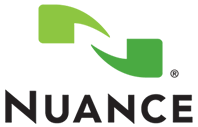The contribution to the LRE Map through the submission of your paper (abstract/final paper) is mandatory for LREC 2012. The map is intended to monitor the use and creation of language resources (datasets, tools, etc.).
The LRE Map, launched at LREC2010, sheds light on the vast amount of resources that represent the background of the research presented at LREC and other conferences.
It is accessible at http://www.resourcebook.eu/LreMap/faces/views/resourceMap.xhtml.
Introduction
In 2010, LREC 2012 authors are asked to contribute to the LRE (Language Resources and Evaluation) Map providing information about both existing resources that have been used for research and newly created resources. Resources are considered in their broad sense and include datasets, tools, evaluation methodologies, guidelines and standards, etc.
The resource entry form is very simple to make this process as easy as possible for you. To help normalizing language resource metadata we have introduced new features (such as autocompletion) that take into account metadata inserted so far by all of you.
The normalization of values through autocompletion is an experiment that aims at harmonizing your input. We are aware of the pros and cons of this feature and will be glad to have feedback from you all on this issue. Please send this to [E-mail].
Warning: The autocompletion suggests values searching within the whole string, not just at the beginning of the resource name.
General Instructions
Mining all the information provided by LREC 2010 authors we slightly revised the list of values for several fields, including the most frequent values provided by you.
Insert new values only if you feel that the suggested values do not describe fully your case.
In every field you can always choose ŌĆ£OtherŌĆØ and specify the most appropriate label for your resource/tool.
Since we are interested in collecting information on the use of existing resources, and resources that you create, it may well be that you have more than one resource to describe. Please note that you have to fill in one form for each resource you used or created and mentioned in your submission paper (i.e. if in your submission you are describing the creation of a bilingual lexicon from a parallel annotated corpus and you use a given parser, you will have to fill in 3 forms: one for the newly created lexicon, one for the annotated corpus and one for the parser).
You are allowed to enter up to 10 resources and/or tools. If you have more than 10, please contact us.
If you do not have any resources to describe (e.g. if your submission is on General issues, Infrastructures, etc.), please tick the box No resources to report with this submission and complete your submission.
Please note that reviewers will see also the information of the resources that you describe in the form(s).
Some details on each metadata
Resource Name: Full name is preferred for newly created resources, followed by the acronym, if any. You may find the normalized version through autocompletion typing the resource name. Resource Type: Here you must indicate the general type of the resource used or created that you are describing.
Size: Here you can specify the size of your resource on the basis of several units of measure (KByte, sentences , lexemes etc.)
Resource Production Status: Here we want to know if the resource already exists or if you created it. For a newly created resource, we want to know whether the resource production is completed or if work is still in progress. In the case of an existing resource, we want to know whether it has been simply used (ŌĆśExisting-usedŌĆÖ) or you have updated or modified it (ŌĆśExisting-updatedŌĆÖ).
Languages: For most languages you will find through autocompletion the language names followed by its ISO code, otherwise use the Other value.
Modality: Choose one of the suggested options or indicate a more appropriate label.
Use of the Resource: Here we are interested in the ŌĆ£actual useŌĆØ of the resource. For an existing resource, we want to know for which application/task you actually used it in your research. For any newly created resource please indicate the actual/intended use for which it has been built. Otherwise, select: ŌĆśNot applicableŌĆÖ.
NB: In case the resource has more than one use, please select here the most relevant/main application and indicate the others in the ŌĆ£Resource DescriptionŌĆØ free text box at the end of the template.
Resource Availability:
- ŌĆ£Freely availableŌĆØ: resources/tools available on the web, at least for research
- ŌĆ£From Data CentersŌĆØ: e.g. ELRA, LDC, etc.
- ŌĆ£From OwnerŌĆØ: resource distributed directly by the owner
- ŌĆ£OtherŌĆØ: indicate any other option if needed
Resource URL (if available): Please, indicate the URL of the resource/tool/guidelines described, if it exists, including the URL of the resource documentation if this is available.
Resource Description: It is important to fill in this section especially for newly created resources. This is also the place where you can contribute any further detail that you were not able to specify above, e.g. additional uses of the resources, more detailed info about the availability of the resource, etc.


















